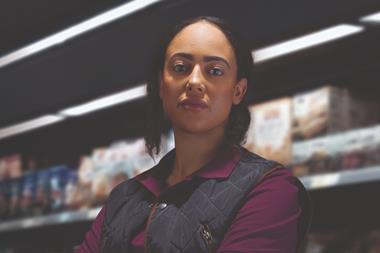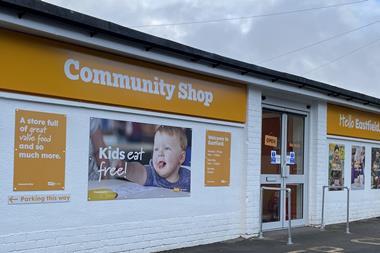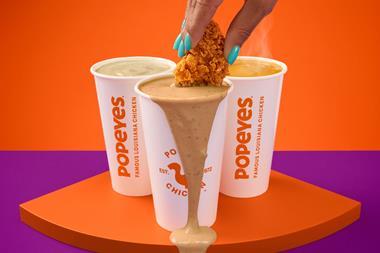a popular item
Bacon at one time seemed headed for the commodity doldrums, so why are consumers now showing such enthusiasm asks Mike Ingham
Foot and mouth has made it a traumatic year in the meat and livestock markets. But trends can be spotted that have surprisingly positive implications for at least some bacon traders.
Volatility has of course been the curse on the supply side of the market, and predictions from most of the reliable forecasters imply a risk of instability persisting well into next year.
On the demand side, however, it is easy to find evidence of buoyancy that would have been cause for celebration in less troubled times.
The challenge now is to find ways of ensuring customers' enthusiasm can buoy up margins against the pressures from erratic raw material costs.
A stream of data from market researcher Taylor Nelson Sofres has shown the percentage increase in household spending on bacon is stronger than that for any other major item in the UK meat category.
The most recent figures were unduly flattering, the 4.1% growth in volume and 17.1% jump in spending for the four weeks to October 14 being distortions due to anomalous trading conditions in the previous corresponding period.
But from the beginning of the year until mid last month, the annual increase in expenditure averaged more than 8% while volume was down by a modest 5.2%.
Smaller volume was to be expected, given the supply interruptions due to foot and mouth here and in the Netherlands, together with the cyclical and structural downturn in availability of high quality British pigmeat attributable to other influences including swine fever, the more persistent diseases PMWS and PDNS, and the generally dreadful financial conditions producers have suffered since about 1998.
Yet the tighter supply does not look like an adequate explanation for the aggressive expenditure by shoppers purchasing for in-home consumption.
Neither does a switch from other meats seem to tell anywhere near the full story.
Some traders on the continent have watched the British expenditure on bacon surge, and suggested our experience matched theirs in late 2000 and earlier this year when the BSE scare that began in France frightened consumers away from beef towards pigmeat.
Some French shoppers also deserted lamb, further boosting demand for pigmeat, when they saw the February outbreak of FMD mostly affected sheep.
Yet in Britain there has not been much of a consumer exodus from the beef or lamb markets, except insofar as the official anti-FMD measures caused sporadic problems with supply and quality.
On the contrary, one reason for confidence within bacon marketing circles is the only slightly subdued demand in beef and lamb if not pork.
That being the case, it seems logical to interpret bacon's performance in attracting extra consumer spending as being on its own merit.
Ten or 15 years ago it was fashionable among nutritionists to sneer at the very notion of bacon having merit, and market forecasters were beginning to adopt a similarly contemptuous attitude.
Consumer prejudice against fatty meat and in particular against the gunge observed oozing from some of the bacon cooked at the time, together with lifestyle changes and this country's rapidly altering demographic profile, were all plausible as justifications for predicting the commodity could lose perhaps half its volume sales within a decade or so.
Some of the flaws in that analysis have long since been recognised. As in the lamb market, which in some important respects mirrored demand for bacon, changes in household structure, lifestyles and consumer age distribution proved much less damaging than expected.
Moreover, the industry has worked hard at responding to the valid criticisms, notably on product quality and the need to suggest to consumers how the inherent adaptability of bacon could help provide many new, surprising yet convenient opportunities for enjoying it. The net effect is a UK market which, if measured crudely as total supply available for consumption, will be slightly bigger this year than at the beginning of the 1990s, about 460,000t against 420,000t.
Of this, household consumption as calculated by MLC analysts using National Food Survey data is about 220,000t, down from roughly 260,000t. That reduction is less than has been seen for beef or lamb, and of course partly reflects the general increase in the proportion of meat eaten out of home.
The terrorist attacks on the US may depress demand in foodservice which usually absorbs large volumes.
Within the last couple of weeks, marketplace gossip has begun almost confirming these predictions of reduced demand not just in tourism but also factory and office canteens.
Nevertheless, the key demand side indicators are those figures from TNS, and it is hard to deny they prove consumers have reacted favourably to the industry's offer and message.
Probably the trickier part of the business, for nearly everyone along the supply chain, will be coping with the distortions sure to result from divergent pig availability trends (fewer in Britain; more on the continent) and overcapacity in the processing sector, which look likely to persist for at least the next year and a half.
{{FOCUS SPECIALS }}
Close menu
- Home
- Retail & Wholesale
-
Products & Suppliers
- Back to parent navigation item
- Products & Suppliers
-
Product Categories:
- Back to parent navigation item
- Product Categories:
- Alcoholic drinks
- Bakery
- Cereals & breakfast
- Cheese
- Chicken & poultry
- Chocolate
- Confectionery
- Crisps, nuts & snacks
- Dairy
- Fish
- Fresh produce
- Frozen
- Household
- Meat
- Own Label
- Sauces & condiments
- Seasonal
- Soft drinks
- Vaping
- Vegan & plant-based
- World foods
- Suppliers
- People
- Reports & Data
-
Topics A-Z
- Back to parent navigation item
- Topics A-Z
-
Popular topics:
- Back to parent navigation item
- Popular topics:
- Cost of living crisis
- Crime
- Deposit Return Schemes
- Finance
- Government & Regulation
- Health
- Inflation
- Loyalty
- Marketing
- Mergers & Acquisitions
- New Product Development
- Sourcing
- Supply chain
- Sustainability & environment
- Technology
- Ultra Processed Foods
- Vaping
- A-Z all topics
- Content by type:
- Events
- Ask iA (beta)
- Subscribe now
Sign in to comment on this article
Not logged in before? Register for FREE guest access today.
You will be able to:
- Read more stories
- Receive daily newsletters
- Comment on stories
Advert



















No comments yet